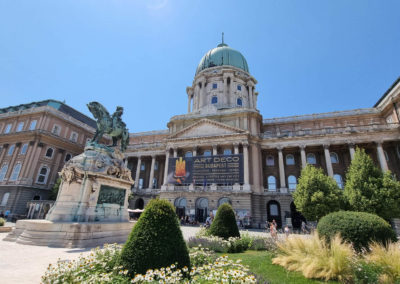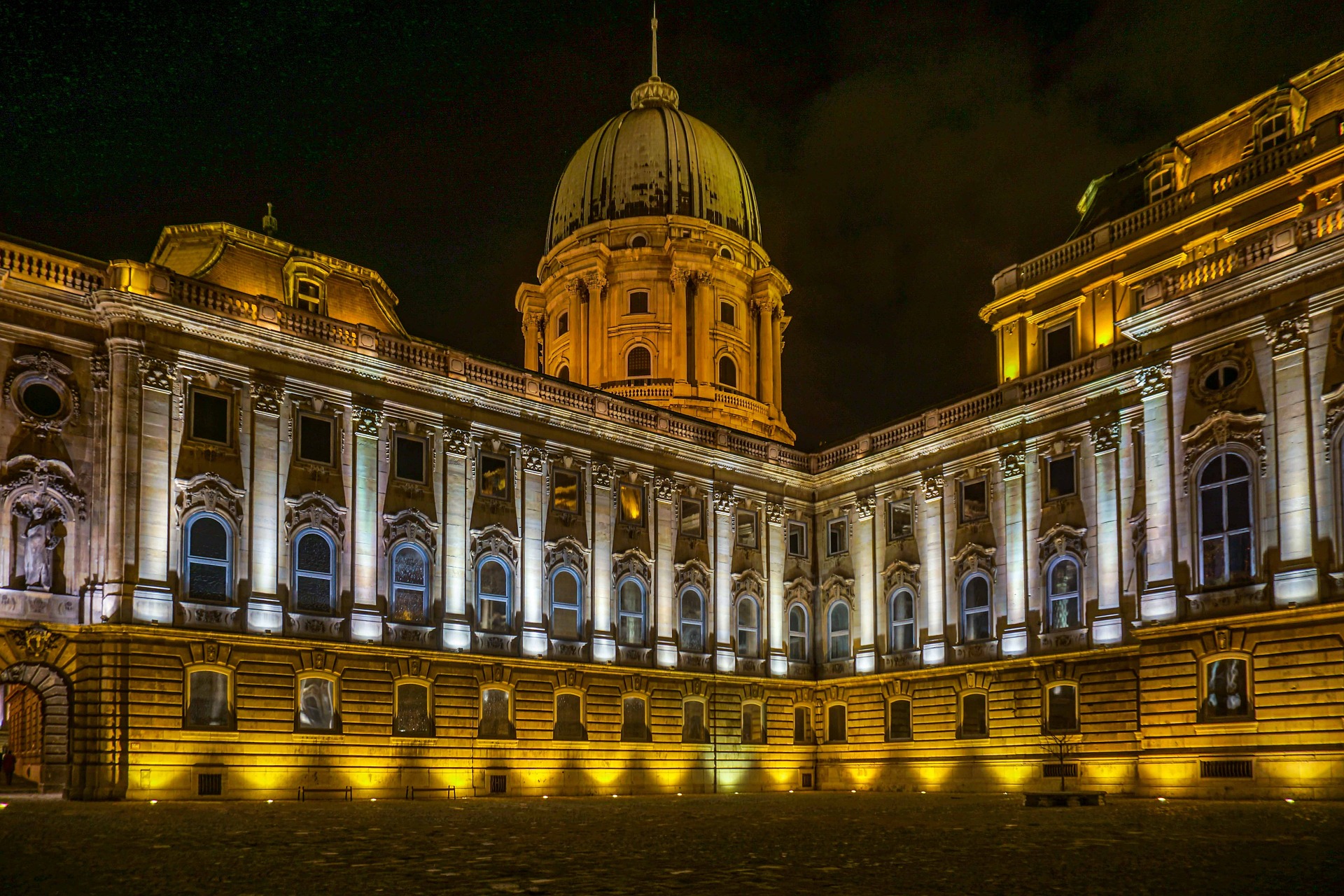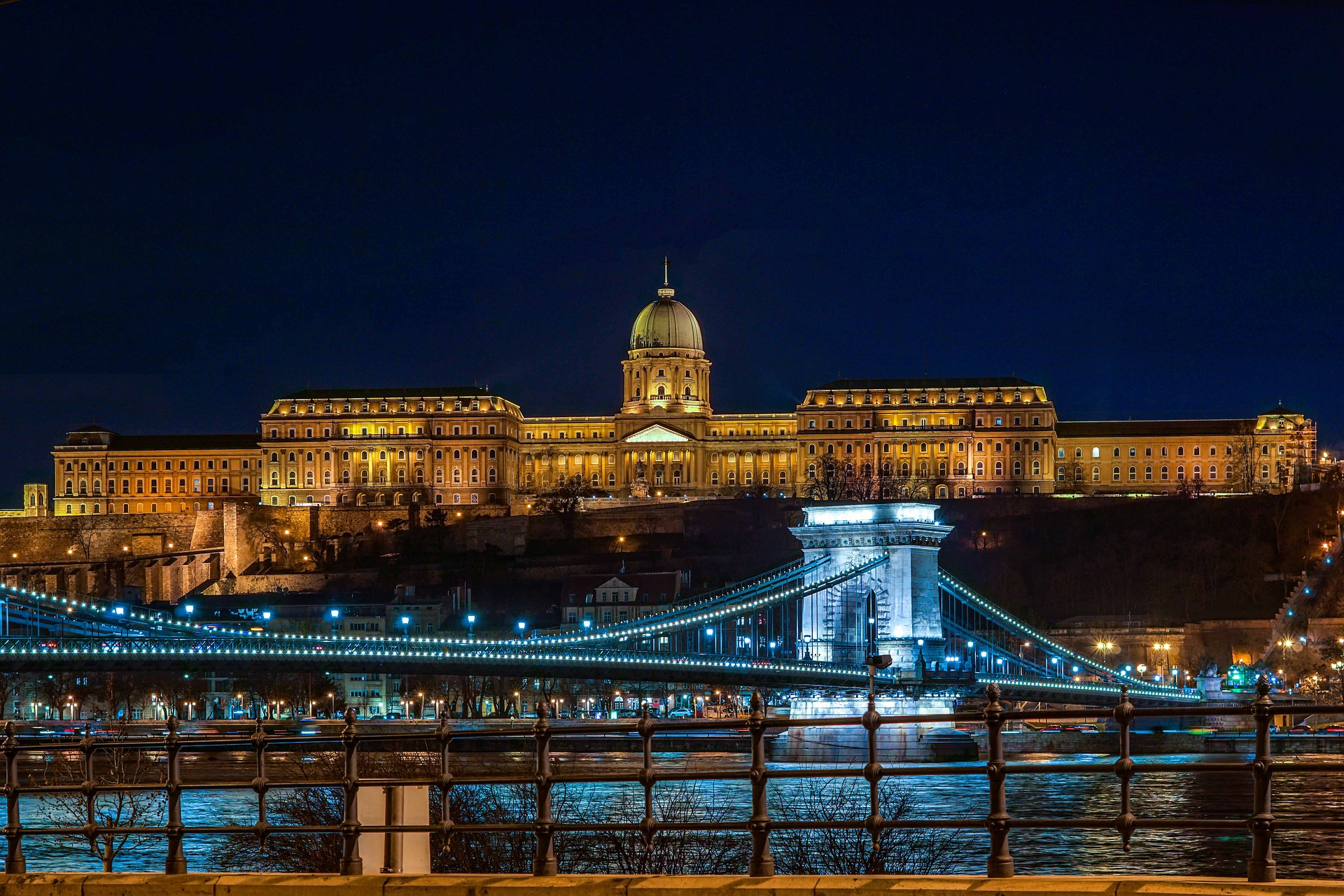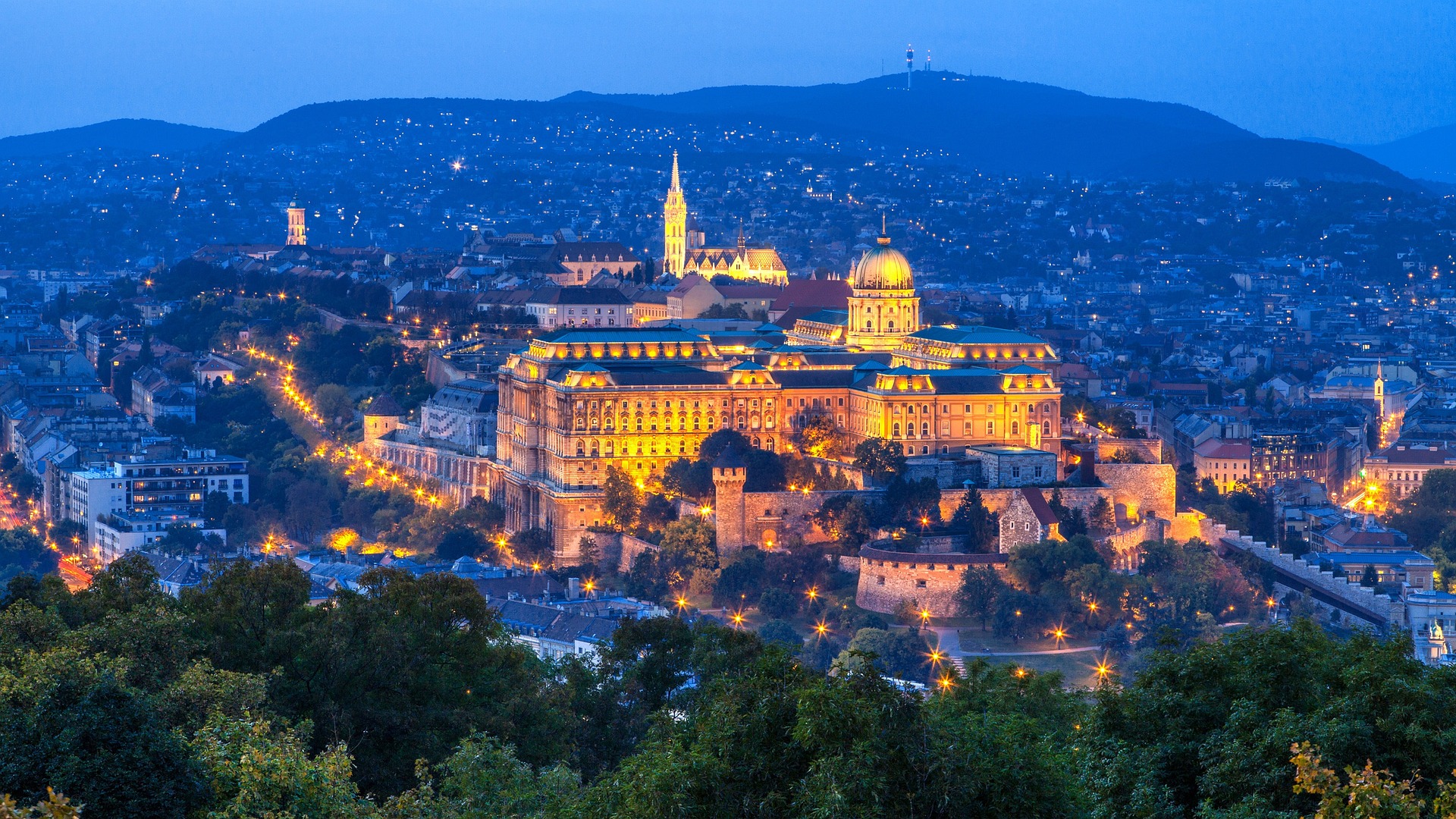Buda Castle (Royal Palace) in Budapest

History of Buda Castle
The Early Years
The origins of Buda Castle can be traced back to the 13th century when King Bela IV of Hungary built a fortified keep on Castle Hill. However, little evidence remains of this initial structure. It was during the reign of King Lajos the Great in the 14th century that the foundations of the present-day castle were laid. The castle underwent significant transformations under the rule of King Sigismund of Luxembourg, who built a Gothic-style palace, making it one of the grandest in Europe.
Renaissance Splendor
In the 15th century, Buda Castle reached its peak magnificence during the reign of King Matthias Corvinus. Influenced by the Renaissance movement, King Matthias commissioned the construction of a new palace in Renaissance style. This era marked a golden age for Buda, attracting artists and craftsmen from across the continent.
Habsburg Rule and Destruction
After the Turkish occupation of Budapest between 1541 and 1686, Buda Castle fell into ruins. The Habsburgs, the new rulers of Hungary, built a smaller Baroque-style palace between 1714 and 1723. However, the palace suffered significant damage during a fire in 1810 and the Hungarian revolt against the Habsburgs in 1849.
Expansion and Modernization
Following the Austro-Hungarian Compromise of 1867, Buda Castle underwent further reconstruction and expansion to symbolize Hungary’s newfound independence. Architects Miklos Ybl and Alajos Hauszmann played pivotal roles in transforming the palace into a grand complex. The reconstruction incorporated elements of Baroque and Classicist styles, creating a harmonious blend of architectural influences.
World War II and Restoration
During World War II, Buda Castle was heavily damaged once again. However, restoration efforts began in 1950 under the guidance of architect Istvan Janaki. The reconstruction incorporated the rediscovered ruins of the Renaissance period, seamlessly blending the old with the new.
Architecture of Buda Castle
Buda Castle boasts a magnificent architectural design that showcases a fusion of Gothic, Renaissance, Baroque, and Classicist styles. The main structure of the castle, known as the Royal Palace, has a more austere appearance compared to its predecessors. The interior, devoid of ornamentation, reflects the changing tastes and styles over the centuries. The palace complex is composed of different wings, designated by letters from A to F, surrounding the Lion Courtyard.
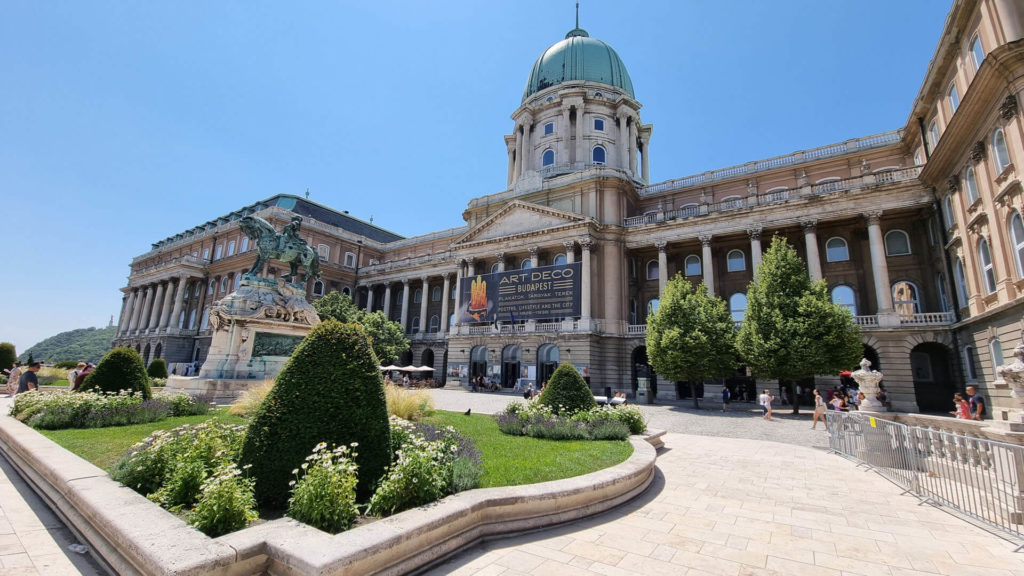
The Lion Courtyard
The centerpiece of Buda Castle is the Lion Courtyard, an expansive area encircled by the National Library, the Hungarian National Gallery, and the Budapest History Museum. The courtyard derives its name from the four lion statues that guard the entrance, created by Hungarian sculptor Janos Fadrusz in 1901. The intricate gate leading to the courtyard features niches, festoons, and allegorical sculptures of Winged Victory, with the Hungarian crest adorning the monument.
Hungarian National Gallery
Within Buda Castle, the Hungarian National Gallery occupies four wings (A to D) and houses an extensive collection of Hungarian artwork spanning from the Middle Ages to the present day. Notable highlights include 14th and 15th-century altarpieces, exhibited in the former throne room. The gallery also boasts a remarkable collection of Romanticist paintings, including works by acclaimed Hungarian artist Mihaly Munkacsy.
Budapest History Museum
Located in the southern wing of Buda Castle, the Budapest History Museum offers visitors a captivating journey through the city’s history from prehistoric times to the present day. The museum showcases ruins and reconstructions of the medieval palace, including the Gothic chapel and the Knights’ Hall. Visitors can also admire marble sculptures that once adorned the palace.
National Library
Situated in the western wing of the palace, opposite the Hungarian National Gallery, the National Library holds a prestigious collection of books and manuscripts. Founded in the early 19th century by Ferenc Szechenyi, the library initially consisted of his private collection of over 1,500 books and manuscripts. Today, it houses copies of every book published in Hungary.
Exploring Buda Castle
Buda Castle Tours
To fully immerse yourself in the beauty and history of Buda Castle, it is highly recommended to embark on a guided tour of the complex. Knowledgeable guides will lead you through the castle’s various wings, courtyards, and museums, providing in-depth insights into its rich heritage.
Opening Hours and Ticket Information
The gardens and courtyards of Buda Castle are open 24 hours a day, allowing visitors to enjoy the scenic surroundings at their leisure. However, access to certain areas, such as the museums, is subject to their respective opening hours. The Hungarian National Gallery is open from Tuesday to Sunday, from 10:00 AM to 6:00 PM, while the Budapest History Museum is open every day except Mondays. It is advisable to check the official websites for any updates or changes to opening hours. Tickets can be purchased on-site, and various ticket options are available for adults, students, and pensioners.
Surrounding Attractions
After exploring Buda Castle, take the opportunity to visit some of the other magnificent landmarks in the vicinity. The Fisherman’s Bastion, an ideal vantage point to admire Budapest’s panoramic views, is a must-see attraction. Adjacent to it is the Matthias Church, a stunning example of Gothic architecture. Another notable site is Vienna Gate Square (Becsi Kapu), where a market was once held, and a decorative gate symbolizing the Christian revival of Buda stands. Explore these attractions to gain a deeper appreciation for Budapest’s rich history and architectural wonders.
The Tunnel under Buda Castle
Just in front of the Chain Bridge, a tunnel passes through the hill on which Buda Castle stands. Designed by engineer Adam Clark, who also built the first permanent bridge in Budapest, the tunnel opened for foot traffic in 1856. Although no longer accessible today, the tunnel was also used for motor traffic in subsequent years. With a length of 350 meters and a height of 11 meters, the tunnel is considered the gateway to the city and has played a significant role in calculating distances between Budapest and other cities. The square across from the tunnel is dedicated to Adam Clark, featuring a statue in his honor.

FAQs
What is Buda Castle (Royal Palace) in Budapest?
Buda Castle, also known as the Royal Palace, is a historic castle and palace complex of the Hungarian kings in Budapest. It's located on Castle Hill in the Castle District, on the Buda side of the Danube River.
What can I see and do at Buda Castle?
Buda Castle houses the Hungarian National Gallery and the Budapest History Museum. Visitors can explore these museums, take in stunning views of the city from the castle grounds, and explore the surrounding Castle District.
How do I get to Buda Castle?
You can reach Buda Castle by public transportation (bus), by foot, or by taking the funicular railway, which ascends Castle Hill from the Buda side of the Chain Bridge.
What are the opening hours of Buda Castle?
The castle courtyards are open 24 hours a day. However, the opening hours for the Hungarian National Gallery and the Budapest History Museum located within the castle differ, so it's best to check their respective websites for the most accurate information.
Is there an entrance fee to visit Buda Castle?
There's no entrance fee to the castle grounds themselves, but admission is charged for the Hungarian National Gallery and the Budapest History Museum
How much time should I plan for a visit to Buda Castle?
This depends on your interest level. A brief visit to see the castle and enjoy the views might take an hour or two, while thoroughly exploring the museums could take half a day or more.
Is Buda Castle wheelchair accessible?
Some parts of Buda Castle are wheelchair accessible, including the Budapest History Museum and parts of the Hungarian National Gallery. However, due to the historical nature of the site, not all areas may be accessible. It's best to check with the specific attractions for detailed information.
Is Buda Castle suitable for children?
Yes, Buda Castle and its museums can be quite interesting for children, especially those who enjoy history or art. Some exhibits may have interactive elements or activities designed for younger visitors.




